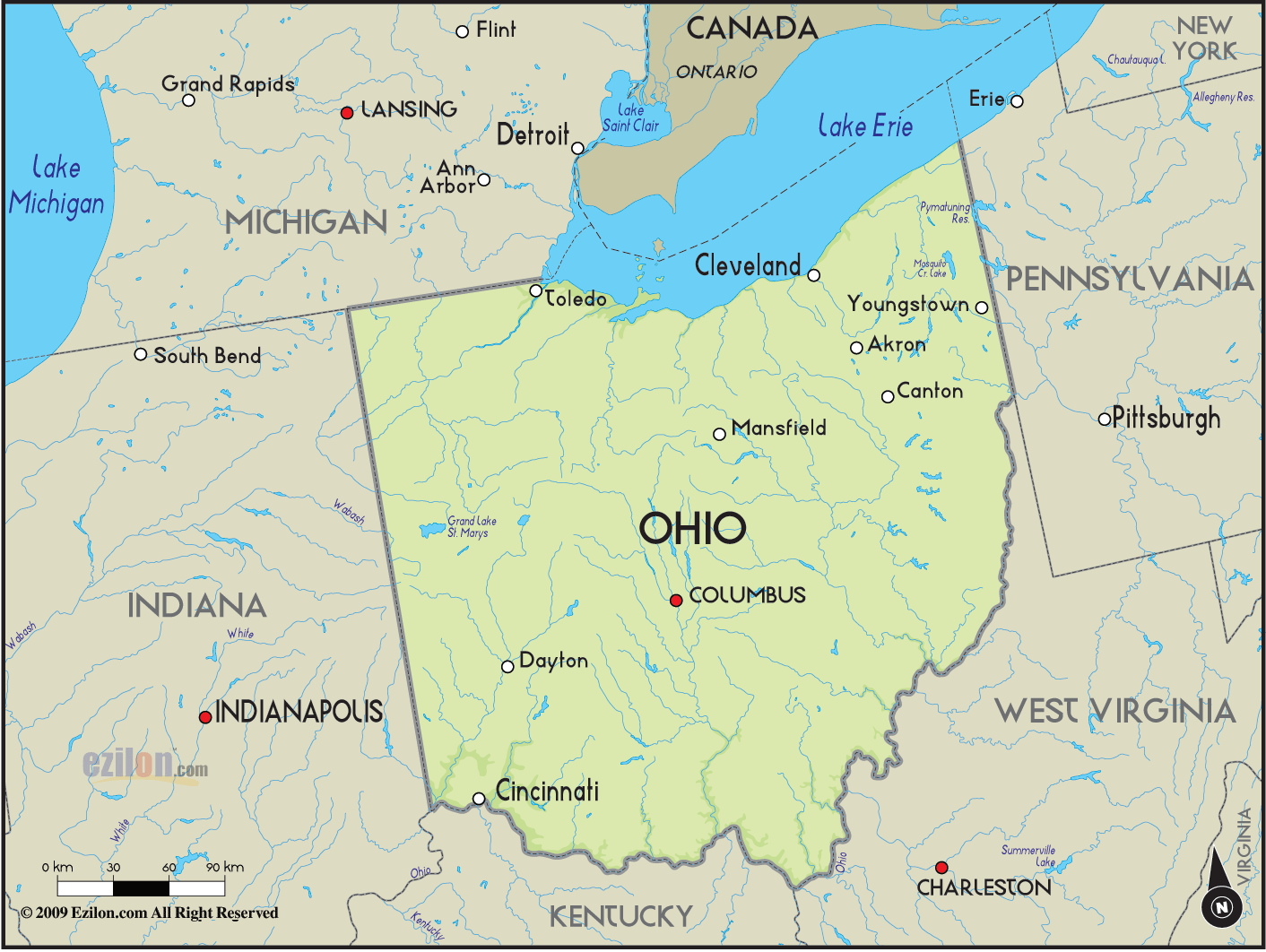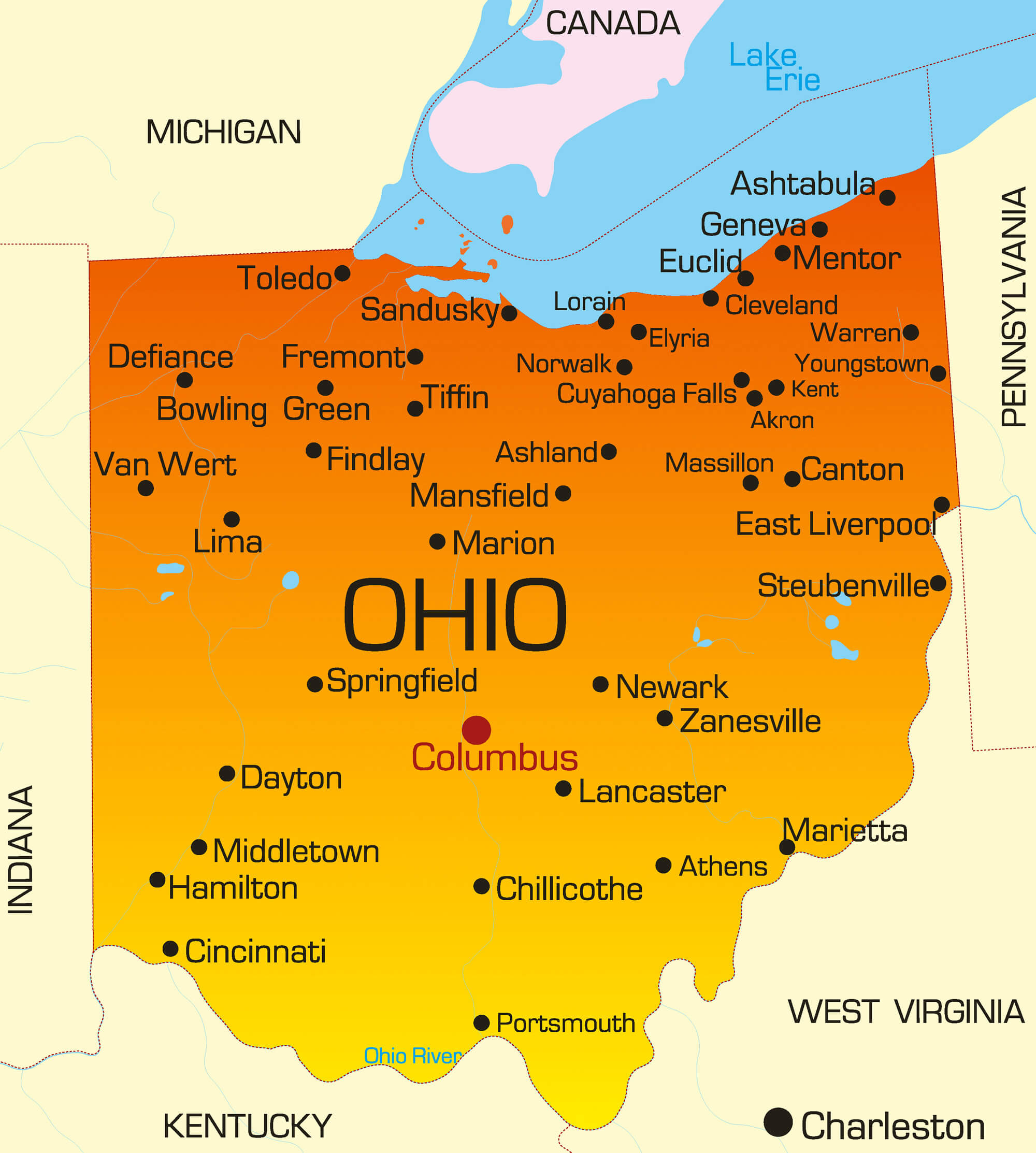Discovering human remains is a profoundly serious matter, a moment that brings with it a wave of questions and, too it's almost, a deep sense of unease. When an Ohio body found incident occurs, it sets in motion a complex series of events involving law enforcement, forensic experts, and very, very, local communities. These discoveries, you know, often spark a collective desire for answers, for understanding what might have happened, and for helping bring peace to those affected. It's a situation that calls for careful attention, really, and a compassionate approach from everyone involved.
Ohio, a state known for its inviting nature, its love for American football, and, of course, the big, cold Lake Erie, is a place of considerable variety. From its bustling metropolitan centers like Columbus, the capital and most populous city, to Cleveland and Cincinnati, as well as Dayton, Akron, and Toledo, Ohio offers many different settings. It's a state that sits on the northeastern corner of the Midwest, and in some respects, it has long been a cultural and geographical crossroads, a bit like a meeting point for many paths. This mix of busy cities and quiet, idyllic nature means that such discoveries can happen in all sorts of places, from busy urban spots to more secluded, rather, rural areas.
As an Ohioan, I have always felt a strong connection to the state's rich history, its varied landscapes, and the warm hospitality you often find here. It's a place that, in a way, reflects the broader American experience. When news surfaces about an Ohio body found, it touches a nerve because it reminds us of the human stories that unfold within our neighborhoods and across our wide-open spaces. It's about finding out who someone was, how they came to be there, and, perhaps most importantly, offering some kind of closure to families who might have been searching for a loved one for a very long time. This process, it's actually about more than just facts; it's about people.
Table of Contents
- The Initial Discovery and Response
- The Investigative Process: Unraveling the Mystery
- Community Impact and Support
- Resources for Missing Persons and Families
- Frequently Asked Questions About Ohio Body Found Incidents
The Initial Discovery and Response
When an Ohio body found situation first comes to light, it usually begins with someone making a discovery. This could be a hiker in a state park, a construction worker on a job site, or even just a person out for a walk in their neighborhood. The very first step, almost always, is to contact local law enforcement immediately. It's incredibly important not to disturb the scene in any way, as the area around the remains holds a lot of valuable information that police and forensic teams will need to collect. Preserving the scene is, you know, absolutely critical for the investigation that follows.
Once authorities arrive, they secure the area. This means setting up perimeters, perhaps with tape or officers, to make sure no one accidentally or intentionally interferes with the evidence. Police officers, along with detectives, will begin to assess the scene. They're looking for anything that might give them clues: personal items, signs of struggle, or anything that seems out of place. This initial assessment helps them form a preliminary idea of what they're dealing with, and it guides the next steps in their work. It's a very careful, methodical start to a potentially long process.
Soon after, specialized teams, which often include crime scene investigators and forensic experts, will arrive. Their job is to document everything with incredible precision. They take photographs from every angle, measure distances, and carefully collect any physical evidence they find. This could include fibers, soil samples, or anything else that might help piece together the story. The remains themselves are handled with great care, too it's almost, and are eventually transported to a medical examiner's office. This whole initial phase is, in a way, about gathering as much raw data as possible before any conclusions can be drawn.
- Debra Messing Nude Naked
- Katharine Mcphee Leaked Nude
- Kimberly Ann Langwell
- Gwyneth Paltrow Thong
- Bumper Boats For Pool
The Investigative Process: Unraveling the Mystery
After an Ohio body found at a scene is carefully removed, the real work of figuring out who the person was and what happened to them truly begins at the medical examiner's office. This is where highly trained forensic pathologists take over. Their main goals are to identify the individual, if possible, and to determine the cause and manner of death. This process can be quite detailed and sometimes takes a significant amount of time, depending on the condition of the remains and the complexity of the case. They use a variety of scientific methods, you know, to gather every possible piece of information.
Law enforcement agencies, meanwhile, start their own parallel investigation. They might check missing persons databases, talk to people in the area where the discovery was made, and follow up on any leads that emerge from the initial scene assessment. They work closely with the medical examiner's office, sharing information back and forth. This collaborative effort is, very, very, important because the findings from the forensic examination often provide crucial directions for the police investigation. It's a bit like putting together a very complicated puzzle, with each piece coming from a different source.
The state of Ohio, as a crossroads of sorts, has a vast network of roads and waterways, which are represented on its flag by stripes. This means that sometimes, remains found in one area might be linked to events that happened quite a distance away. The large blue triangle on the Ohio flag represents the state’s hills and valleys, reminding us that the terrain itself can play a role in how and where such discoveries occur. So, investigators often have to think broadly about potential connections, looking beyond immediate geographical boundaries. It's a rather expansive search for truth.
Identification Methods
Identifying an Ohio body found is often the first and most pressing goal for authorities. There are several methods forensic experts use to try and put a name to the person. One of the most common and reliable ways is through dental records. If the person had a dentist, comparing their unique dental patterns with existing records can quickly provide an identification. This is why, you know, dental records are so important in investigations like these. They offer a very clear path to confirmation.
Another powerful tool is DNA analysis. Samples taken from the remains can be compared against DNA databases, like those used for missing persons cases, or even against DNA provided by family members who have reported someone missing. This process can take a bit longer, but it's incredibly accurate and can identify individuals even when other methods aren't possible. It's a really amazing scientific advancement that has helped solve countless cases over the years. Sometimes, it's the only way to get answers, actually.
Fingerprints, if available and well-preserved, are also a quick way to identify someone if they are in a database. Personal effects found with the body, such as jewelry, clothing, or even tattoos, can provide clues that lead to identification, especially when combined with missing persons reports. Sometimes, a person's physical characteristics, like height, age estimates, or old injuries, can match descriptions given by families of missing individuals. All these pieces of information are, you know, carefully considered and cross-referenced to build a full picture.
Determining the Cause and Manner
Beyond identification, determining the cause and manner of death is another critical aspect when an Ohio body found is under examination. The cause of death is the specific injury or disease that led to the person's passing. This could be anything from a gunshot wound to a heart attack, or perhaps complications from a long-term illness. The medical examiner conducts a thorough examination, including an autopsy, to find these physical reasons. They look for any signs on the body that might explain how the person died, and it's a very detailed process.
The manner of death, on the other hand, describes the circumstances surrounding the death. There are typically five categories for this: natural, accident, suicide, homicide, or undetermined. A natural death means it was due to disease or old age. An accidental death is, well, an accident, like a car crash or a fall. Suicide means the person intentionally ended their own life. Homicide means someone else caused the death. And if there isn't enough information to fit into one of these categories, it's listed as undetermined. This distinction is, you know, incredibly important for both legal reasons and for understanding the broader context of the discovery.
The findings from the medical examiner's office are shared with law enforcement, and these findings greatly influence the direction of the police investigation. For example, if the manner of death is determined to be a homicide, the investigation shifts to finding the person responsible. If it's an accident, they might look into the circumstances that led to it. This careful work helps to provide answers, not just to the authorities, but more importantly, to the families who are waiting for news. It's a truly vital part of the entire process, really, bringing clarity to a difficult situation.
Community Impact and Support
When an Ohio body found incident happens, it often has a significant ripple effect through the local community. People naturally become concerned, and there's often a shared sense of sadness or even fear. News travels quickly, and residents might start to wonder about safety in their own neighborhoods or about the well-being of people they know. This collective feeling is, you know, a very human response to such a serious event. It reminds us that we are all connected, in a way, and that the well-being of one person can affect many others.
In response to these events, communities often come together. There might be vigils held, or local groups might organize to support the families of missing persons. People might share information they think is helpful with the police, or simply offer comfort to those who are grieving. This coming together shows the strength of community bonds, and it's a rather powerful display of empathy. Ohio, with its friendly people and strong local ties, tends to be a place where folks look out for each other, and this is especially true during tough times.
The state's official website, Ohio.gov, is a valuable resource for finding government information and services. It’s a place where you can learn about various state agencies and what they do. While not directly about specific cases, understanding the governmental framework can help people feel more informed about how such situations are handled. It's good to know, you know, that there are official channels for information and support. This helps to build trust and keeps people feeling connected to the process, which is actually quite important for community healing.
Resources for Missing Persons and Families
For families who have a loved one missing, the discovery of an Ohio body found, even if it's not their family member, can stir up a mix of emotions: hope, fear, and a renewed sense of urgency. It highlights the ongoing need for resources and support for those who are searching. In Ohio, as in other states, there are various organizations and government agencies dedicated to helping families find answers. These resources are, very, very, important for providing guidance and comfort during an incredibly difficult time.
Law enforcement agencies maintain missing persons databases, and it's always important for families to file a report as soon as possible if someone disappears. These reports are crucial because they allow police to enter information into national systems that can be cross-referenced with unidentified remains found anywhere in the country. This system is, you know, a primary tool for connecting discoveries with missing individuals. It's a vital link in the chain of trying to bring people home, or at least provide answers.
Beyond official channels, many non-profit organizations and support groups offer assistance to families of missing persons. These groups can provide emotional support, help with creating flyers, or even assist with organizing search efforts. They understand the unique pain of not knowing where a loved one is, and they offer a safe space for families to share their experiences and find strength in numbers. It's a really important network of care, you know, that helps people cope with the long, difficult wait for news.
Understanding these resources is key for anyone who might find themselves in such a heartbreaking situation. It's also a way for communities to show their support, by being aware of these services and perhaps even contributing to them. For more general information about the state's services and how government works in Ohio, you might want to visit the official state website. You can learn more about Ohio's government information and services here. Also, you can learn more about Ohio's rich history and diverse landscapes on our site, and you might also find support by visiting resources for missing persons and support.
Frequently Asked Questions About Ohio Body Found Incidents
What happens immediately after an Ohio body is found?
Immediately after an Ohio body found is reported, law enforcement secures the scene to protect any evidence. They begin an initial assessment, and then specialized crime scene investigators arrive to meticulously document and collect all relevant items. The remains are then taken to a medical examiner's office for further examination. It's a very careful and systematic process, you know, designed to preserve every possible clue.
How do authorities identify an Ohio body found?
Authorities use several methods to identify an Ohio body found. The primary methods include comparing dental records, analyzing DNA samples, and checking for fingerprints. They also consider personal effects found with the remains, such as clothing or jewelry, and cross-reference physical characteristics with missing persons reports. It's a comprehensive approach, really, using science and investigative work to piece together who the person was.
What resources are available for families of missing persons in Ohio?
For families of missing persons in Ohio, law enforcement agencies are the first point of contact for filing a report and entering information into national databases. Additionally, many non-profit organizations and support groups offer emotional support, help with publicizing cases, and assist with search efforts. These groups provide a vital network of care and information, which is actually quite helpful during such a challenging time.
Related Resources:



Detail Author:
- Name : Immanuel Hettinger
- Username : arturo.bailey
- Email : cummings.cathy@monahan.com
- Birthdate : 1981-08-11
- Address : 81286 O'Conner Knolls Grahamberg, HI 56502
- Phone : (559) 638-7947
- Company : Fay, West and Lebsack
- Job : Personnel Recruiter
- Bio : Consectetur dolor ipsa eum consequatur et sunt. Rerum dolorem corporis doloremque itaque sapiente magni sequi. Voluptas laboriosam veniam eveniet et sit aperiam in.
Socials
facebook:
- url : https://facebook.com/mward
- username : mward
- bio : Sit deleniti officia et. Eum et cum officiis est qui repudiandae atque.
- followers : 3133
- following : 1932
tiktok:
- url : https://tiktok.com/@magnoliaward
- username : magnoliaward
- bio : Quibusdam aut voluptatum et delectus dolorum molestiae aut.
- followers : 1211
- following : 109